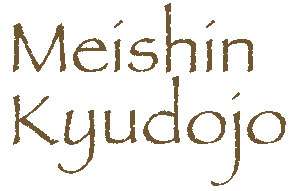
 |
|||
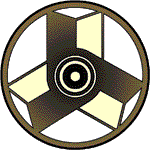
 |
||
Kyudo Equipment


There are three basic types of bows (yumi) in use today: a standard bamboo yumi, lacquered bamboo yumi, and synthetic yumi made with fiberglass or carbon-fiber. The bow of choice for most kyudo practitioners is the standard bamboo yumi which is made today very much the same as it was 500 years ago. With its simplicity and clean lines the bamboo yumi is unsurpassed in beauty and elegance.
A bamboo bow is not particularly delicate but it is susceptible to extremes of climate and physical abuse. For this reason, many schools and kyudo clubs recommend that novice practitioners use synthetic bows. Generally speaking, kyudo should be practiced with natural materials but a bamboo yumi is quite expensive, costing upwards of six or seven hundred dollars. For beginners, who have not yet perfected the technique of shooting a Japanese bow, the potential for damaging an expensive bamboo bow is high. Bows made from carbon-fiber or fiberglass-covered wood are a durable, less expensive alternative. These bows usually cost less than four hundred dollars and are practically indestructible given normal use.
Lacquered yumi, are special-made by only a few bowmakers today. As a result, they are extremely expensive, often costing two or three thousand dollars or more. Consequently, they are generally used only for special ceremonies, and then only by the most advanced of practitioners. Yumi are available in a variety of lengths and pull strengths. Most beginners start with a yumi that has a pull of ten or twelve kilograms. After a year or more of practice they will then move up to bow with a higher pull strength. On average, an experienced female practitioner will use a yumi of fourteen to sixteen kilograms, while a male practitioner will use a yumi with a slightly greater pull strength, around eighteen to twenty kilograms. All this, of course, depends on experience and body type.
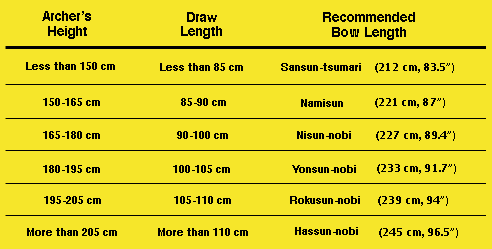
A good bamboo yumi seems almost alive. When new, it is strong and full of energy, and must be watched over carefully and gently corrected to keep it in proper shape. Special shaping blocks are available for this job (see Accessories). A yumi must also be protected from extremes of cold, heat, moisture, and dryness. The great Japanese bowmaker, Higo Saburo, recommends that we treat a bamboo yumi as we would treat ourselves; warm it with a soft cloth when cold, dry it when wet, and moisten it periodically with a damp cloth if the air is extremely dry. A badly warped yumi or a yumi with vertical cracks in the bamboo can be repaired by a professional, although in the latter case the expense is great. A yumi that breaks completely or has horizontal cracks in the bamboo is most likely beyond repair. It is also important to know that if a bamboo yumi is left unattended for long periods it may warp beyond repair or the recurve may bend to such an excessive height that the yumi is incapable of being strung. A yumi in proper condition should have a recurve height of no more than 25 centimeters or so.
A detailed explanation of the care and use of the Japanese yumi is available in our book, Kyudo: The Essence and Practice of Japanese Archery.
(See the Resources section of this web page for more information)
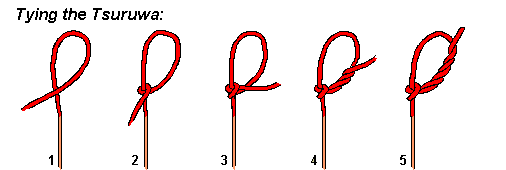
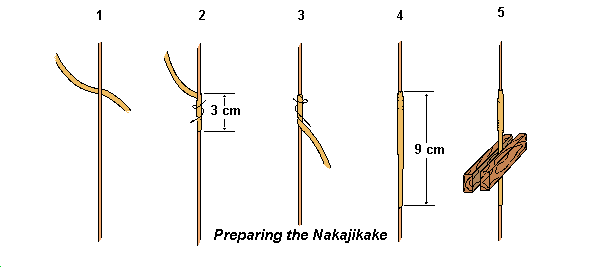
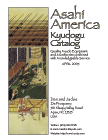
| This site is maintained by Dan and Jackie DeProspero, co-authors with their teacher, Hideharu Onuma Hanshi, of the books Kyudo: The Essence and Practice of Japanese Archery and Illuminated Spirit: Conversations with a Kyudo Master http://www.kyudo.com.html—Revised April 2, 2012 Copyright © 1998 Dan and Jackie DeProspero |
||